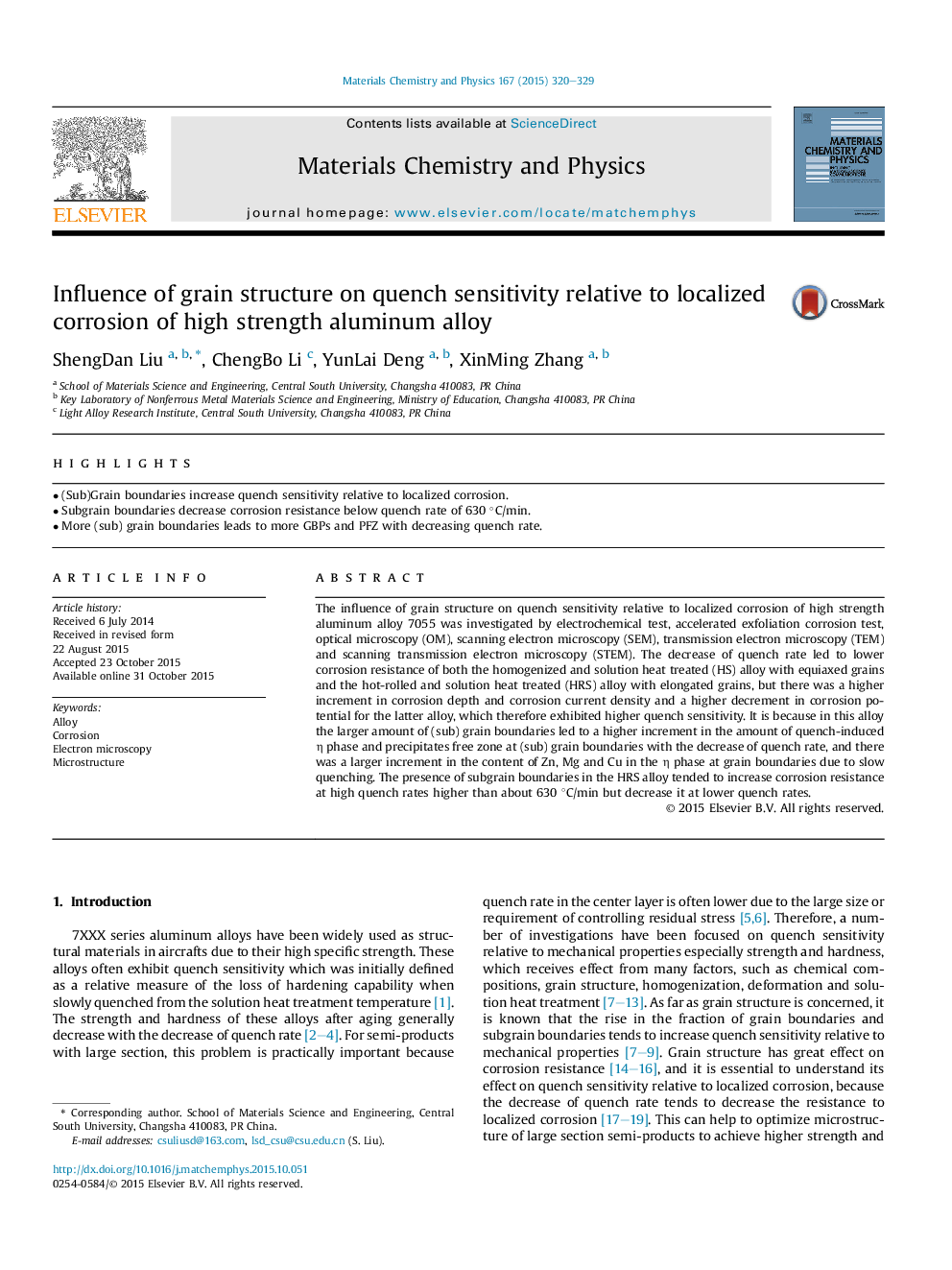| Article ID | Journal | Published Year | Pages | File Type |
|---|---|---|---|---|
| 1521011 | Materials Chemistry and Physics | 2015 | 10 Pages |
Abstract
The influence of grain structure on quench sensitivity relative to localized corrosion of high strength aluminum alloy 7055 was investigated by electrochemical test, accelerated exfoliation corrosion test, optical microscopy (OM), scanning electron microscopy (SEM), transmission electron microscopy (TEM) and scanning transmission electron microscopy (STEM). The decrease of quench rate led to lower corrosion resistance of both the homogenized and solution heat treated (HS) alloy with equiaxed grains and the hot-rolled and solution heat treated (HRS) alloy with elongated grains, but there was a higher increment in corrosion depth and corrosion current density and a higher decrement in corrosion potential for the latter alloy, which therefore exhibited higher quench sensitivity. It is because in this alloy the larger amount of (sub) grain boundaries led to a higher increment in the amount of quench-induced η phase and precipitates free zone at (sub) grain boundaries with the decrease of quench rate, and there was a larger increment in the content of Zn, Mg and Cu in the η phase at grain boundaries due to slow quenching. The presence of subgrain boundaries in the HRS alloy tended to increase corrosion resistance at high quench rates higher than about 630 °C/min but decrease it at lower quench rates.
Related Topics
Physical Sciences and Engineering
Materials Science
Electronic, Optical and Magnetic Materials
Authors
ShengDan Liu, ChengBo Li, YunLai Deng, XinMing Zhang,
